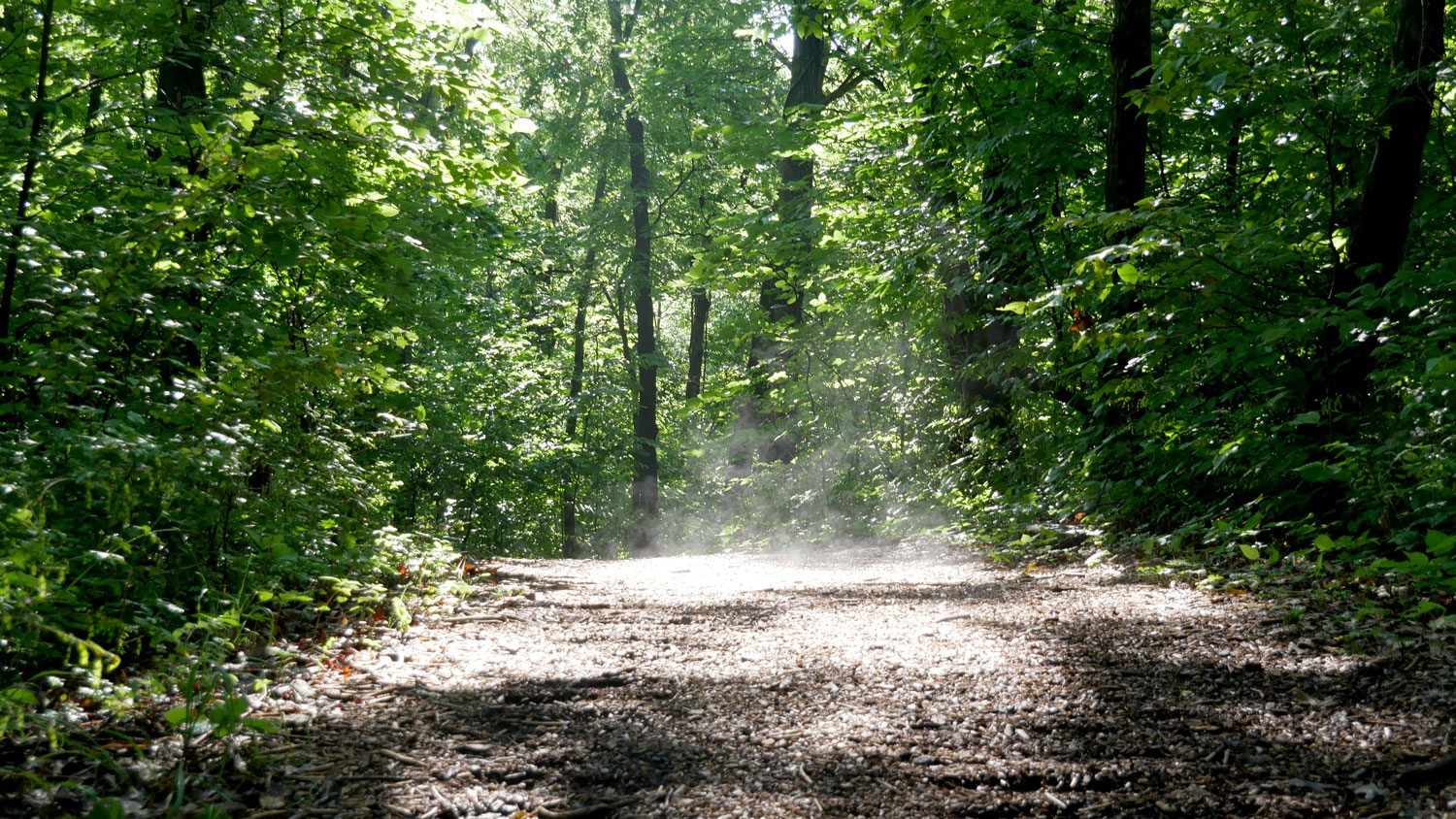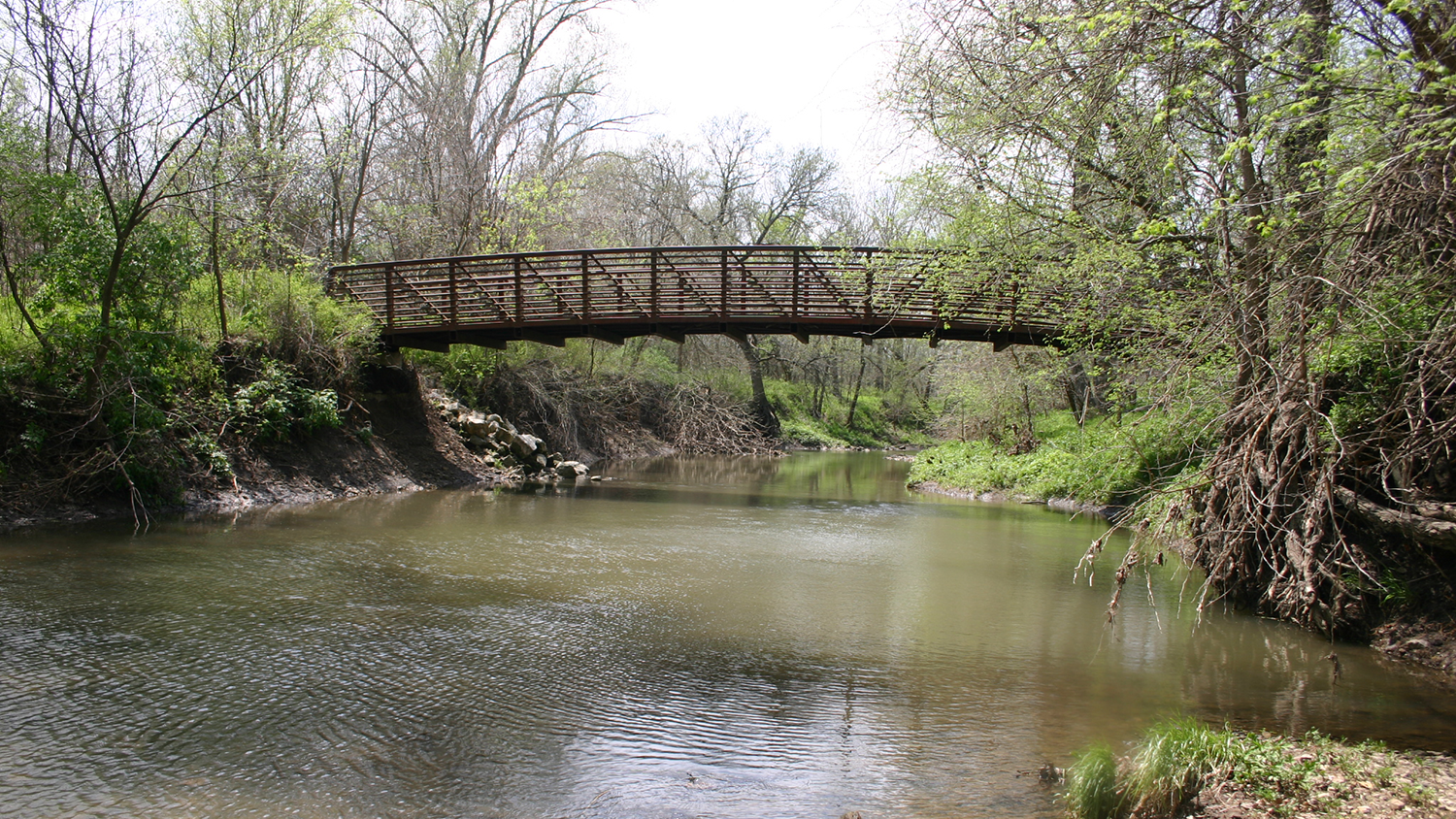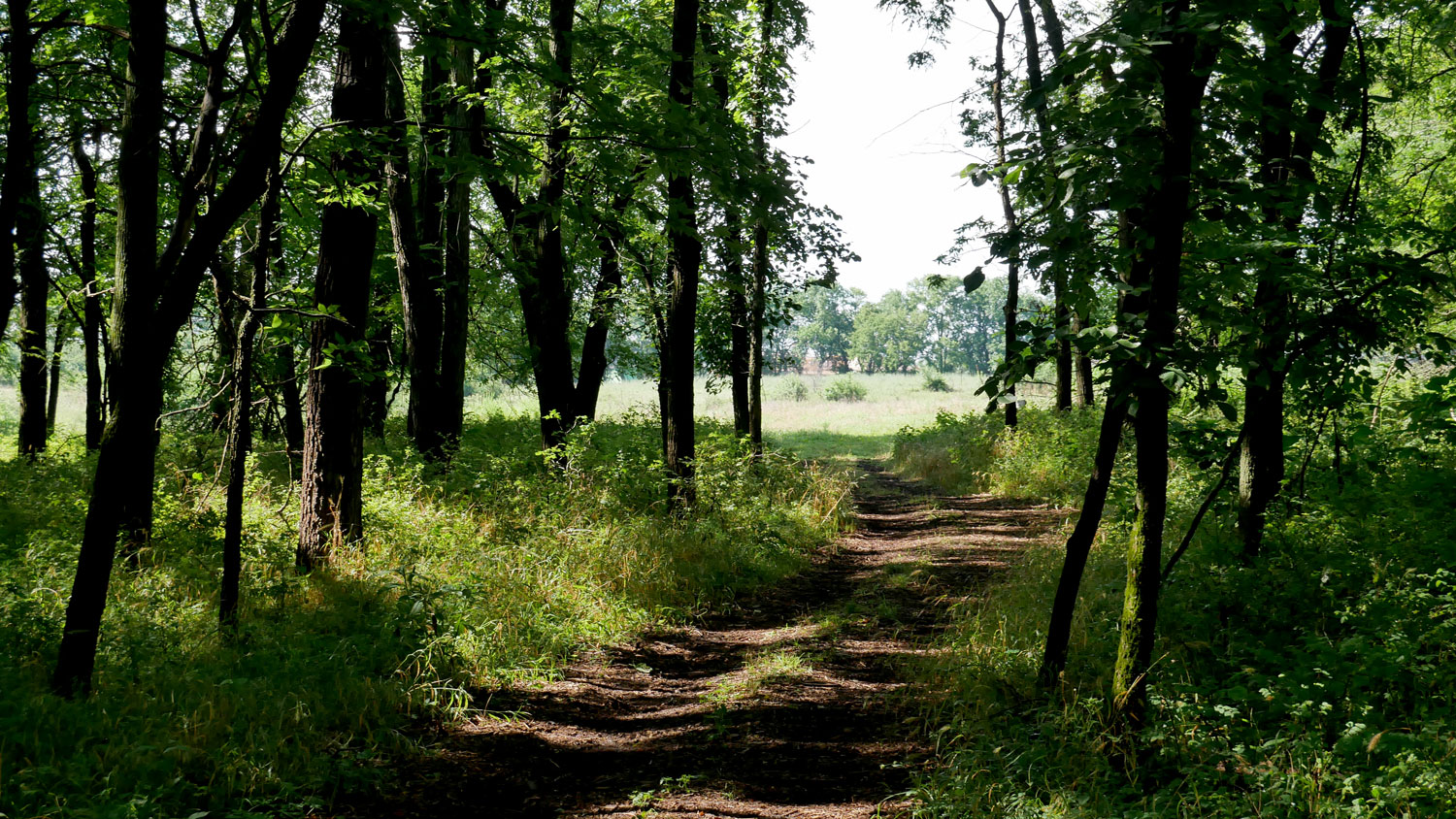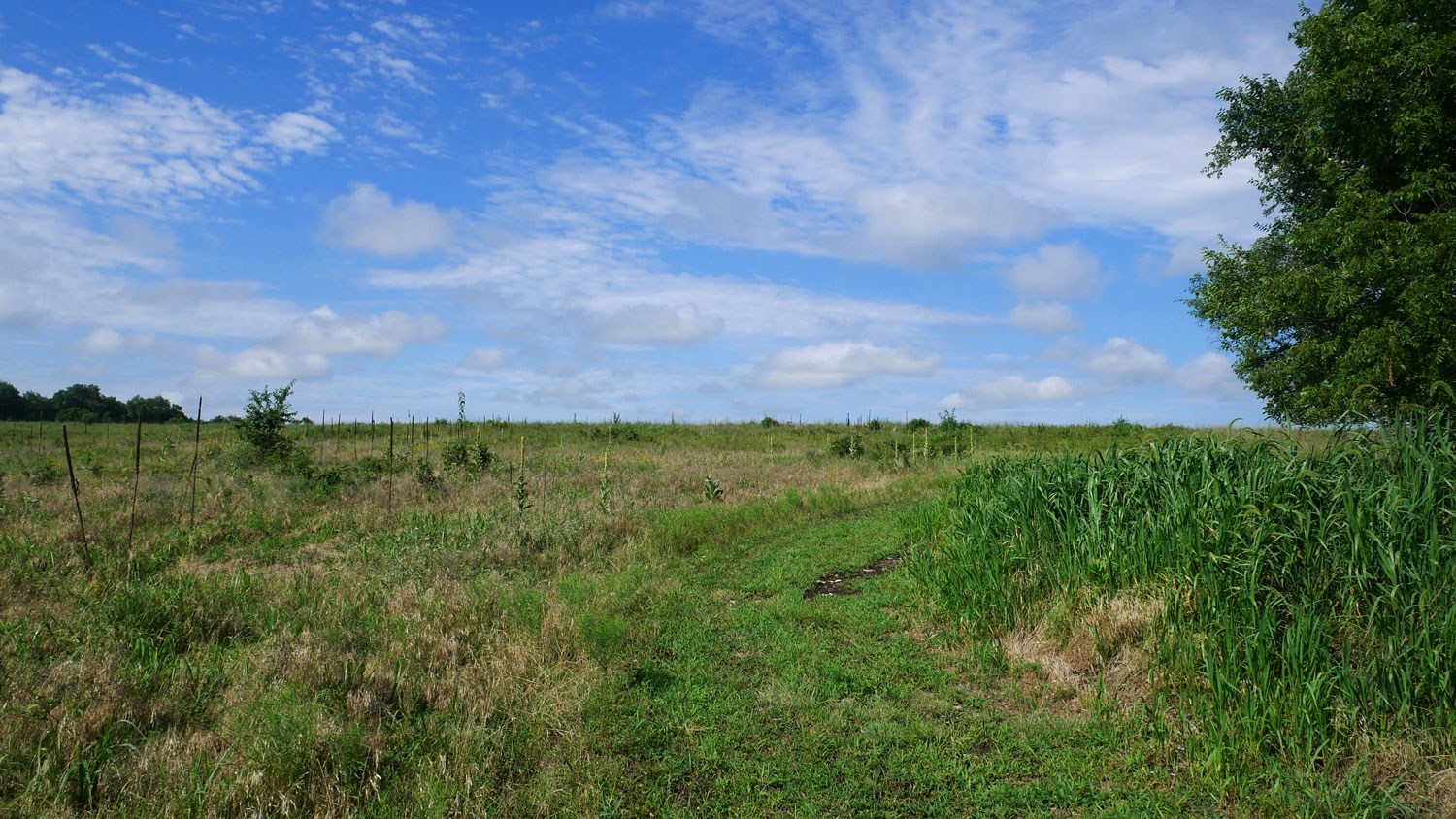Karen's Path
Karen’s path is a 0.3-mile natural hiking loop, featuring views of Wolf Creek, a native grass meadow, lower woodlands and a stunning Sycamore grove.
Nearly six miles of paved and wood chip hiking trails wind their way through the Overland Park Arboretum & Botanical Gardens.
The easiest of strolls are on the paths and sidewalks throughout the gardens. There are benches along the paths and walkways that meet Americans with Disabilities Act standards for accessibility.
The trails cross Wolf Creek, a major tributary of the Blue River, with two 75-foot bridges.
The Arboretum also offers visitors a chance to view and experience a variety of ecosystems and local plant species in 180 acres of open prairie area.



8909 W. 179th Street
Overland Park, KS 66013
913-685-3604
September - March
Monday-Sunday | 9 a.m.-5 p.m.
April - August
Monday, Wednesday, Friday, Saturday, Sunday | 9 a.m.-5 p.m.
Tuesday, Thursday | 9 a.m.-8 p.m.
Last entry 30 minutes before closing.
Gates shut at closing time.
Children ages 5 and under are free.
$3 ages 6-17
$7 ages 18+
Free admission on the first Tuesday of each month.
Each trail showcases a wide variety of tree species, native woodland plants and unique vegetation.
Karen’s path is a 0.3-mile natural hiking loop, featuring views of Wolf Creek, a native grass meadow, lower woodlands and a stunning Sycamore grove.
The cottonwood trail is a 0.4-mile mulched trail consisting of a gradual slope. This trail is named for the towering cottonwood trees near the east bridge. The cottonwood trail also features a bird watch area.
The sculpture garden trail is an easy half-mile asphalt walk through the Arboretum’s sculpture garden.
The west trail is a one-mile natural hiking trail that runs along the north bank of Wolf Creek before traversing the lower woodlands and a native grass meadow.
The bluff loop trail is a one-mile natural hiking loop with stunning limestone bluffs and mossy rock landscapes. The upper section of the trail features natural rock crossings while the lower section provides panoramic views of Wolf Creek.
The rocky ridge trail offers a one-mile, end-to-end, trek through the upper woodlands, passing limestone bluffs with rock fissures along a natural gorge. Cross footbridges over meandering streams. Two of the trail’s southernmost points stretch into the prairie, and visitors are welcome to explore the prairie on their own.
The whitetail pass is a 1.5-mile natural hiking trail consisting of many gradual slopes and natural rock crossings over streamways. This intermediate trail offers unparalleled views of Wolf Creek and western limestone bluffs.

Visitors can take the bluff loop and rocky ridge trails onto the prairie, where they may explore the beautiful landscaping on or off of the paths.
In addition to the rolling fields of big and little bluestem, switchgrass, prickly pear cactus and various native wildflowers, areas of interest on the Arboretum prairie include the old duck pond, two waterfalls, a cedar grove and a bluff overlook of Wolf Creek.
Arboretum staff and volunteers manage the prairie with a three-year rotation of reseeding, haying and burning to simulate grazing by wildlife and wildfire burning of the prairie.
Notifications